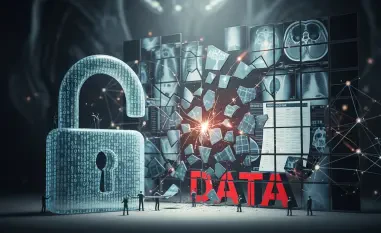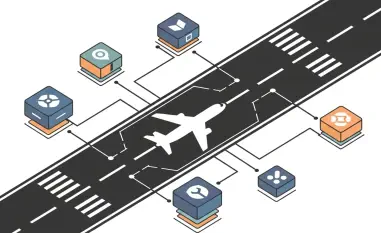In today’s rapidly advancing digital landscape, Malik Haidar stands out as an expert who deftly navigates the complex domain of cybersecurity. With his extensive experience in shielding multinational corporations from cyber threats, Malik brings a unique perspective that blends analytical prowess with a keen understanding of business dynamics. Our conversation touches on a particularly pertinent issue facing companies today—the increasing complexity of non-human identities (NHIs) due to AI and other advanced technologies.
Can you explain what non-human identities (NHIs) are and why they are becoming more complex?
Non-human identities, or NHIs, encompass everything from service accounts and APIs to AI agents that are not linked to a single human user. They are becoming more complex due to the rapid integration of AI, which often acts on behalf of users and interacts with multiple systems. This complexity is heightened by the vast number of NHIs needing management, where each requires specific security controls to prevent unauthorized access.
How do non-human identities differ from human identities in terms of management and security challenges?
Unlike human identities, which are often centrally managed, NHIs are created and distributed across various platforms, sometimes without centralized oversight. This decentralized creation process, often by developers or business units, makes it difficult to monitor and secure them uniformly. Moreover, NHIs typically interact with numerous systems, multiplying potential access points and security vulnerabilities.
Why is it important for companies to have visibility into their non-human identities?
Visibility is crucial because, without it, companies cannot effectively manage or secure NHIs. These identities form a massive part of the attack surface, and if businesses cannot see or track them, they are at risk of breaches and disruptions. Knowing the scope and ownership of these identities is the first step towards enforcing security measures and maintaining system integrity.
What are some common challenges companies face when managing machine identities?
Companies often struggle with the sheer volume and distribution of machine identities. There is a lack of a standardized approach to creating, managing, and deactivating these identities. Additionally, keeping track of which identities have access to sensitive information is challenging, often leading to unauthorized access or data breaches.
How have the ratios of non-human identities to human identities changed in recent years, and what implications does this have for security?
The ratio has shifted dramatically from about 10 to 1 in 2020 to 50 to 1 today, starkly illustrating the rapid growth of NHIs. This shift significantly expands the attack surface, making it imperative for organizations to invest in robust security strategies to monitor and manage these identities effectively.
What role do APIs and tokens play in the proliferation of non-human identities?
APIs and tokens are key enablers for NHIs, allowing machines to authenticate and access various services seamlessly. They simplify complex integrations but also pose security risks if not managed properly, as they can be exploited if they fall into the wrong hands or remain active beyond their intended lifespan.
How do AI agents complicate the management of non-human identities?
AI agents add complexity because they often act autonomously, interacting with systems using derived credentials. These agents can modify their behaviors and access patterns, which adds unpredictability and requires dynamic security policies to manage effectively.
Can you describe the concept of “agentic AI” and how it differs from traditional non-human identities?
Agentic AI refers to AI systems that operate with a degree of independence, making decisions and executing actions without direct human input. Unlike traditional NHIs, which perform predefined tasks, agentic AI can learn and adapt, necessitating a more sophisticated approach to identity management and security.
What are some best practices for managing and securing non-human identities?
Best practices include implementing strong secrets management by rotating keys and tokens regularly, enforcing strict access controls, using zero-trust principles, and ensuring comprehensive monitoring and logging of all NHI activities to detect anomalies promptly.
How do companies typically monitor non-human identities, and why might this be insufficient?
Many companies rely on traditional IAM solutions that may not be equipped to handle the dynamic nature of NHIs. These tools often lack the granularity and scalability needed to track interactions and changes, which can leave gaps that sophisticated threats might exploit.
Why is the concept of “off-boarding” important when dealing with non-human identities?
Off-boarding is critical to prevent unauthorized access once a task is complete. By ensuring that access is revoked at the right time, companies can mitigate risks associated with dormant or forgotten accounts that could be exploited.
Can you explain how the PCI 4.0.1 standard addresses the issue of non-human identities?
The PCI 4.0.1 standard strengthens security requirements for systems and applications that involve NHIs, emphasizing the need for stringent authentication and lifecycle management practices to protect sensitive data and comply with industry regulations.
How do AI services, like Microsoft’s Copilot or Google’s Gemini, challenge traditional identity models?
These services blur the lines between human and non-human interaction by executing tasks on behalf of users, often using human-like permission models. They require a reevaluation of identity frameworks to ensure that they’re secure and trackable within existing infrastructure.
What are some ramifications of having non-human identities that work on behalf of users?
Non-human identities acting on users’ behalf can create ambiguity in accountability and auditability. This can lead to confusion in determining whether actions were taken by AI agents or actual users, complicating incident response and forensics.
How can companies differentiate between actions taken by AI agents versus those taken by actual users?
Differentiating actions requires advanced monitoring tools that can track session data and behavioral patterns. Establishing unique identifiers and logs for AI activity can help clarify responsibility and maintain robust security postures.
Why might non-human identities present a larger attack surface than human identities?
NHIs can access multiple systems, hold varied permissions, and are often created by multiple stakeholders without consistent oversight. Their sheer number and distribution make them attractive targets for attackers, who can exploit any mishandling or oversight in their management.
What strategies are companies using to better manage non-human identities?
Companies are adopting identity-centric infrastructures, enhancing secrets management, deploying access graph technology for mapping relationships, and employing AI-driven analytics to detect and respond to threats in real time.
Can you explain the role of access graph technology in managing identities?
Access graph technology helps map the relationships and permissions associated with both human and non-human identities. By visualizing these connections, organizations can identify potential vulnerabilities and ensure that every identity is managed according to policies.
How do secrets management solutions help protect non-human identities?
Secrets management solutions protect NHIs by securely storing, managing, and rotating the access credentials necessary for machine-to-machine communications. They reduce the risk of credentials being exposed or misused.
Why is it challenging to centrally manage non-human identities compared to human identities?
Non-human identities are created across various systems and by diverse teams within an organization, lacking a single point of oversight. This scattering complicates efforts to apply uniform security controls and necessitates the integration of disparate identity management systems.
What changes does the OAuth protocol need to undergo to better handle non-human identities?
OAuth needs to evolve with finer permission scopes and dynamic, easily revocable tokens. It must support multi-party interaction securely and accommodate scenarios with fluid control handovers to ensure robust security for NHIs.
How can current authentication and authorization technologies adapt to address non-human identity challenges?
By evolving to offer more granular and dynamic permissions, current technologies can manage the transient and varied needs of NHIs. This includes integrating robust audit trails, supporting adaptive access control, and ensuring seamless interoperability across different trust boundaries.
Can existing technologies like ID Connect and OAuth be updated to meet new requirements for managing non-human identities?
Certainly, these technologies can be enhanced to better handle the complexities of NHIs. This involves refining their scopes and permissions management capabilities, as well as ensuring that revocation and session monitoring processes are up to par for dynamic environments.
What are the risks involved if companies fail to address the management of non-human identities?
Companies risk data breaches, unauthorized access, and potential service disruptions. Failing to manage NHIs can lead to substantial financial losses, reputational damage, and legal liabilities, particularly if they compromise sensitive data.
How might changes in the security industry impact the way non-human identities are managed in the future?
As the security industry continues to evolve, incorporating AI and machine learning, the management of NHIs will likely become more automated and intuitive. Companies will need to adopt advanced technologies that offer real-time monitoring and proactive threat minimization to stay ahead.













